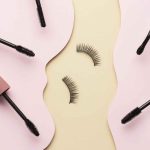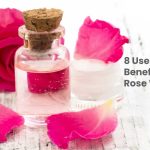Cysts are hard lumps that contain a variety of chemicals generated by the body. Cysts come in a variety of shapes and sizes. An epidermoid cyst, which forms just beneath the skin, is the most frequent variety.
Skin cysts are a common occurrence for anyone. Although they are normally not dangerous, they can become unattractive or unpleasant if they grow to be very large. As a result, knowing what to do if you find a cyst on your skin is critical.
When a cyst becomes infected, it becomes red, warms up, and becomes uncomfortable. If an infected cyst is not treated, the infection might spread to the surrounding tissues. It will then cause cellulitis and, in the worst-case situation, bloodstream infection.
What to do if skin cyst?
Cysts are usually harmless. You should not worry. Small cysts that do not cause problems can be ignored. You should not burst the cyst yourself. If it is infected, you run the danger of transmitting the contamination. On the other hand, if the cyst is left under the skin, it can grow back.
Skin Syst Types
Epidermoid cysts are among the most common forms of skin cysts. It is most found on the face, neck, chest, shoulders, and the skin around the genitals. Epidermoid cysts are little bumps that develop beneath the skin. They have no further symptoms and are never cancerous.
Trichilemmal cysts include pilar cysts. It most typically occurs on the scalp and grows around hair follicles. Pilar cysts are benign cysts that develop around hair follicles.
Discuss with your doctor if the cyst:
- bothers you continuously
- gets infected
- causes pain
- expands fast in size
Ways to Prevent Infection:
There are a few things to get rid of cyst infections.
First, clean your face and wash the area regularly with an antibacterial soap. Second, 3-4 times a day, place a hot water bottle or damp washcloth over the cyst. This can speed up the recovery of the cyst. If you have cystic acne, you may find that cold compresses are more effective in relieving discomfort and pain.
You should avoid shaving near the cyst as this can allow bacteria to enter and increase the risk of infection. To prevent infection, use an antiseptic treatment such as tea tree oil or an antibiotic cream.
Check to see whether any of the hair is above the skin if your cyst is caused by an ingrown hair. If so, remove the hair with a clean pair of tweezers.
Here are some advices you can follow:
- Soak a clean towel or washcloth in warm water for a few minutes.
- Squeeze the water out of the towel. Gently press it against the cyst. Allow it to sit for up to 10 minutes. Repeat the procedure 3-4 times each day, try to use a clean washcloth.
- Avoid using products that include harsh chemicals or scents since they might irritate your skin.
- Never scrub the cyst or apply harsh exfoliants to it because doing so can exacerbate the inflammation. Never attempt to burst or remove a cyst at home. Infection risks are raised as a result. Additionally, popping a cyst doesn’t ensure its lasting disappearance.
- If there is no hair above the skin, do not attempt to remove it. The hair may rise to the surface with the use of a heated compress
- Avoid picking, squeezing, or cracking open cysts. By doing so, you run the danger of contaminating the cyst sac and transmitting any infection farther into the body.


















